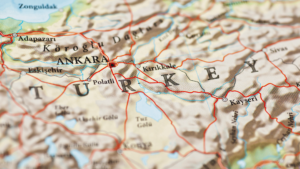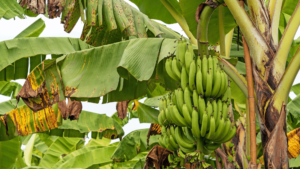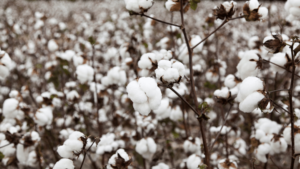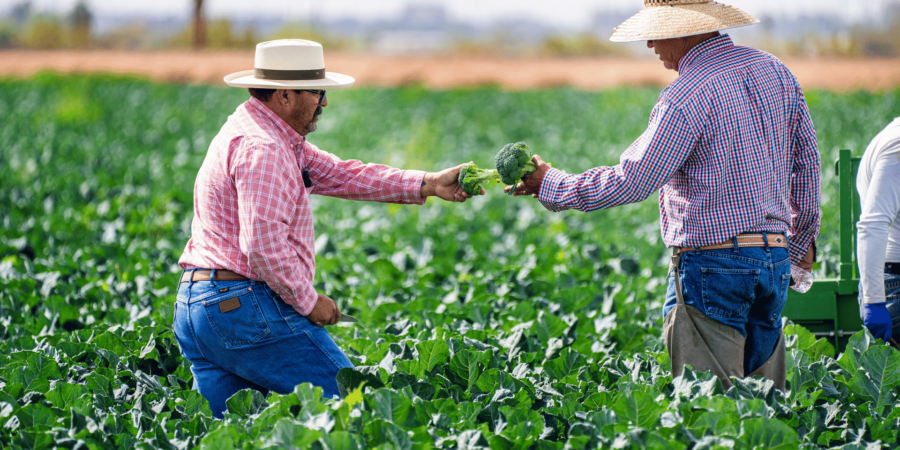Exploring the Agricultural Landscape of Turkey’s Mediterranean, Eastern Anatolia, and Southeastern Anatolia Regions
Doğancan Çelik
The Mediterranean region of Turkey boasts an abundance of fertile soil and a temperate climate, making it a premier destination for agricultural pursuits. The Taurus Mountains, which run parallel to the Mediterranean Sea, serve as a natural barrier separating the region from Central Anatolia. The Mediterranean climate is prevalent along the coastline, with the exception of the Region of Lakes, which is surrounded by mountains and experiences a continental climate.
The Mediterranean region of Turkey is known for its diverse and bountiful agricultural offerings, with a wide range of crops grown along the coastline, including olives, citrus fruits, bananas, soybeans, avocados, apricots, and watermelons, among others. The area’s Mediterranean climate, characterized by warm winters and moderate summers, provides an ideal environment for the cultivation of citrus fruits, such as oranges and lemons, which are particularly abundant in the region. This extended growing season leads to a larger yield and higher-quality fruits, which are then exported to countries around the world. According to data from the Institute of Agricultural Economics and Policy Development (IAEPD), in 2021, 1.6 million tons of lemon production was achieved, with the provinces of Mersin, Adana, and Hatay being the top producers, accounting for 55%, 26%, and 9% of Turkey’s lemon production respectively.
The Mediterranean region’s climate is particularly conducive to banana cultivation, as evidenced by the steady increase in production in recent years. According to data from the Ministry of Agriculture and Forestry (MAF), banana production in Turkey has risen by 139.4% over the past five years, from 369,000 tons to 883,045 tons. The Institute of Agricultural Economics and Policy Development (IAEPD) has also reported that the majority of banana production in Turkey is concentrated in the provinces of Mersin and Antalya.

Agricultural Landscape of Turkey
The Mediterranean region of Turkey is not only known for its traditional crops like olives, citrus fruits, and grapes, but also for its diverse array of vegetables, including tomatoes, peppers, eggplants, and cucumbers. These vegetables are grown using modern agricultural techniques and are an important source of supply for both local and national markets. Moreover, the region is also rich in a variety of herbs and plants, such as sage, helxine heliotrope, affodill, toywort, laurus, glasswort, mallow, papaver, taro, nettle, erodium, caperberry and more, according to Ediable and Drinkable Herbs of Antalya (2019).
In conclusion, the Mediterranean region of Turkey is an ideal location for agricultural activities due to its fertile soil, temperate climate, and long growing season. The region’s agricultural industry plays a significant role in the country’s economy, providing jobs for local residents and making a significant contribution to the country’s GDP. Additionally, the region’s agricultural products are exported to various countries around the world, further boosting the economy.

Eastern Anatolia Region: Agricultural Overview
The Eastern Anatolia region, located in the northeastern part of Turkey, is known for its harsh continental climate, characterized by cold winters and hot summers. Despite these challenging conditions, the region is an integral player in the country’s agricultural sector, with a reputation for producing a wide range of crops and livestock.
The primary crop grown in the Eastern Anatolia region is wheat, which is utilized for a variety of purposes, including animal feed, breadmaking, and brewing. Additionally, the region is also a significant producer of other cereals such as barley and oats. Among the cities in the Eastern Anatolia region, Malatya is particularly noteworthy for its agricultural production and industry. According to the Institute of Agricultural Economics and Policy Development (IAEPD) report in 2022, Turkey ranks first in the world in the production of fresh and dried apricots, with 48.7% of the production coming from Malatya. In 2020, apricot production covered an area of 562,000 ha and yielded 3.7 million tons.
The cultivation of grapes in Elazığ dates back to ancient civilizations, such as the Hittites and Urartians, and continues to this day with the cultivation of the highly regarded grape species, “Öküzgözü”. The climate of Elazig, characterized by cold and rainy winters and hot summers with limited precipitation, makes it an ideal location for viticulture. Additionally, the Eastern Anatolia region is a vital contributor to the agricultural sector through its emphasis on livestock farming. The region boasts a significant presence of large-scale, mechanized livestock farms, which yield a diverse array of products including meat, milk, and dairy. Additionally, the region is a major producer of poultry, as well as a notable producer of beef and lamb.

Southeastern Anatolia Region: Agricultural Overview
The Southeastern Anatolia region, situated in the southeast of Turkey, is characterized by its dry and arid climate. Despite the challenging environmental conditions, the region is a vital contributor to the agricultural sector, known for its production of a diverse range of crops and livestock. Cotton is the primary crop grown in the region, which serves a variety of purposes including textiles, animal feed, and biodiesel. The region also boasts a significant presence in the cultivation of other crops including grains, legumes, and oilseeds. According to the IAEPD (2022) report, the Southeastern Anatolia region produced 833,000 tons of cotton on 432,000 hectares in 2021/22, with an increase in productivity and cultivation areas. Of this production, 43.7% was in Şanlıurfa province and 10% was in Diyarbakır province.
The Southeastern Anatolia region is also a significant producer of fruits and vegetables. The region’s fruit and vegetable farms cultivate a diverse range of crops including melons, apricots, pistachios, and various vegetables. These crops are grown both in open fields and greenhouses and are utilized for both domestic consumption and export. Pistachio production is an important contributor to the economy of the Southeastern Anatolia region, as per IAEPD (2022) report pistachio production was realized in an area of 3.9 million decares in 2021. Among the provinces, Şanlıurfa has the largest production area with 1.5 million decares. The production was 119,000 tons in 2021. Şanlıurfa ranks first with 39,000 tons. The region also excels in red lentil production, with Şanlıurfa alone accounting for 48% of Turkey’s total red lentil production.
The Southeastern Anatolia region’s agricultural sector is heavily dependent on livestock farming, which is a significant contributor to the economy. The region is home to a large number of small-scale, family-owned livestock farms that raise sheep, goats, and cows. The region is particularly notable for its production of sheep and goat meat, as well as milk and other dairy products. Turkey’s agriculture sector is diverse and varied, with each region specializing in specific crops and livestock. The country is a significant producer and exporter of agricultural products and plays a vital role in the economy. The agriculture sector of Turkey is diverse and varied, with each region specializing in specific crops and livestock, the country is one of the major producer and exporter of agricultural products, and plays a vital role in the economy.




